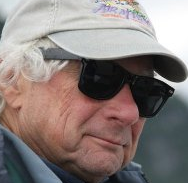Black Lives Matter Has Been Warning Us. We're Finally Listening
By Joe Rothstein
The sight of a policeman murdering George Floyd was horrifying. Equally horrifying was the sight of dozens of Buffalo, New York policemen blithely walking by an elderly man lying prone at their feet, blood flowing from his head.
Floyd was killed by one policeman and three others who took the role of bystanders. In Buffalo, an entire squad of police ignored a badly injured peaceful protester who had been shoved to the ground by one of their own. This wasn’t one bad apple. It was the whole rotten barrel.
As if to put an exclamation point on this egregious incident of inhuman malfeasance, 57 members of the Buffalo police unit resigned to protest the suspension of the two officers who pushed the man to the ground. The president of Buffalo police union said they resigned "in disgust because of the treatment of two of their members, who were simply executing orders."
The “orders” were to enforce a curfew, hardly a reason to rough up anyone, and certainly not a lone, elderly man who was a threat to no one.
Street protests aren’t war, but when people don uniforms, become equipped with military grade weapons, and are told to protect the “battlespace,” as Secretary of Defense Mark Esper defined the streets, it can feel like one for those on the “front lines.” The militarization of the police positions suspected law offenders not as criminals, but the enemy. An order to enforce a curfew becomes an order to “charge.” An old harmless man becomes an enemy combatant. And those feeling the brunt of the attacks respond as you might expect. They fight to defend themselves.
I live in Washington, D.C. On the first nights of protests over the George Floyd murder people in the streets were angry, and their anger was met with barrages of rubber bullets, tear gas and pepper spray. Military equipment was visible throughout the downtown area. Camouflage-wearing National Guardsmen carried semi-automatic weapons. The anger of the protesters turned to fury. Then, Washington’s mayor and city authorities pushed back. They cleared the streets of military-style presence and thinned the ranks of city police. The crowds grew but the violence disappeared.
The very clear message: This is not a war zone. People have a right to protest. The D.C. local government trusted people to do that peacefully. Militarization of the situation sucked up so much available law enforcement that actual criminals saw the opportunity to loot stores on streets away from the action. Police who normally would have been available to stop them were too busy with crowd control.
The larger question, of course, is the one that drew people to the streets in the first place. A black man who seems to have had too much alcohol to drink tried to cash a bad check, and for that the penalty was capital punishment. Like the straw that broke the camel’s back, it was one case of police violence against the black community too many.
We’ve all seen the statistics of the disproportionate number of African-Americans in jail, but lately, courtesy of cell phone photography, we’ve been seeing an epidemic of African-Americans summarily given the death penalty for minor infractions, or no infractions at all, by police who pay no price for their murder.
The whole country has been learning what the African-American community has been experiencing, not just now, not just in Minneapolis, but during their entire lifetimes. Black people are three times more likely to be killed by police than white people. In 2019, police killed 1,098 people. According to the web site www.policeviolence.org, most killings began with police responding to suspected non-violent offenses, or cases where no crime was reported. In 2017, 89 people were killed by police after being stopped for a traffic violation.
Certainly, police have the right to protect themselves from those who are violent, confused, intoxicated or belligerent. But as a Facebook note I received today reminded me, nurses have to do that all the time, too. In 2018, police-caused deaths in the United States numbered 992. That same year, police-caused deaths in Germany numbered 11. In the United Kingdom, 3. In Canada, 0.
Watching George Floyd die was difficult, but its message is unmistakable. Black lives must be protected from bad cops.
Watching the Buffalo police in action sends an equally important message. The problem we have with policing in the U.S. runs deeper than most Americans have realized.
(Joe Rothstein’s latest political thriller, “The Salvation Project,” is now available from all on line booksellers and most independent book stores. Questions? Comments? Joe Rothstein can be contacted at jrothstein@rothstein.net).




